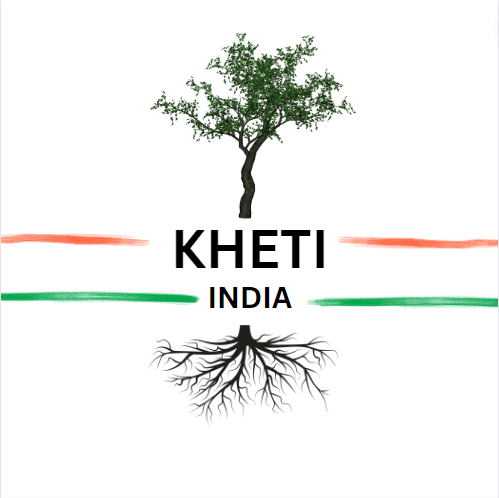What is Fodder Development Scheme?
“The Centrally Sponsored Fodder Development Scheme” is being implemented from 2005-2006, initiated by the Department of Animal Husbandry, Dairying, and Fisheries, is a pivotal program aimed at augmenting feed and fodder availability to support the livestock sector in India. With a focus on enhancing livestock nutrition and productivity, this scheme encompasses various components and technology to ensure efficient utilization of the available resources. An animal husbandry scheme that provides economic benefits to the farmers and nutrient benefits to animals.

Source of photo: IndiaFilings
Elements of the Fodder development schemes
- Establishment of Fodder Block Making Units:
- This component aims to facilitate the establishment of fodder block-making units to produce compressed fodder blocks using locally available feed resources.
- The subsidy for this component has been increased to 50% to incentivize greater participation, thereby promoting the adoption of fodder block technology.
- Grassland Development including Grass Reserves:
- This component emphasizes the development of grasslands and the creation of grass reserves to ensure sustainable availability of fodder.
- The revised land requirement for assistance under this component is set at 5-10 hectares, facilitating broader participation and effective utilization of land resources for fodder production.
- Fodder Seed Production and Distribution:
- Fodder seed production and distribution play a crucial role in enhancing fodder availability and quality.
- Under this component, efforts are made to promote the production and distribution of high-quality fodder seeds to farmers, ensuring improved fodder cultivation practices.
- Biotechnology Research Projects:
- Biotechnology research projects focus on leveraging advanced biotechnological interventions to enhance fodder quality, yield, and resilience.
- These projects contribute to the development of innovative solutions for fodder production and address challenges related to fodder scarcity and quality.
Technology Interventions in fodder development:
- Strengthening of Feed Testing Laboratories:
- The scheme emphasizes strengthening feed testing laboratories to ensure the quality and nutritional adequacy of livestock feed.
- This intervention facilitates informed decision-making regarding feed formulation and supplementation.
- Introduction of Chaff Cutters:
- Chaff cutters are introduced to optimize fodder utilization by chopping fodder into smaller and more digestible pieces.
- This technology intervention enhances feed intake and digestibility, thereby improving livestock health and productivity.
- Establishment of Silage Making Units:
- Silage-making units are established to promote the ensiling of green fodder, preserving it for use during periods of fodder scarcity.
- Silage serves as a valuable feed resource, especially during lean seasons, and contributes to maintaining livestock productivity.
- Demonstration of Azolla Cultivation and Production Units:
- Azolla cultivation and production units are demonstrated to farmers as an alternative feed source rich in protein and nutrients.
- Azolla cultivation promotes sustainable fodder production and serves as a cost-effective feed supplement for livestock.
- Establishment of By-pass Protein Production Units:
- By-pass protein production units are established to produce high-quality protein supplements for livestock feed.
- These units contribute to meeting the protein requirements of livestock, enhancing their growth, reproduction, and overall productivity.
- Establishment of Area-Specific Mineral Mixture/Feed Pelleting/Feed Manufacturing Units:
- Area specific mineral mixture units, feed pelleting, and feed manufacturing units are established to address specific nutritional deficiencies and feed processing needs.
- These units ensure the availability of customized feed solutions tailored to the nutritional requirements of livestock in different regions.
| Name of the modified components | Beneficiaries | Assistance | Per Unit Cost (Lakh) |
| Establishment of the fodder-making units | Public / Private entrepreneurship including Cooperatives and Self-Help Groups (SHGs) | 50:50 | 85.00 |
| Grassland Development including grass reserves | Farmers, Departments Husbandry and Forest. of Animal However, NGOs/village Panchayats would be involved in development of grassland on Panchayat lands and other common property resources | 100:00 | 0.70 |
| Fodder seeds Procurement and distribution | Farmers will be benefitted. The State Govts may involve SIAs/Dairy Cooperatives/ NGOS for implementation of the project. At the rate of Rs.5, 000 per quintal, total 37,000 quintals of fodder seed will be procured by the State Govt and seeds will be distributed among farmers. | 75:25 | 0.05 |
| Strengthening of Feed Testing Laboratories | Existing Animal Nutrition laboratories of Veterinary Colleges/ Agriculture Universities Funds will be admissible for purchase of machinery / equipment required for feed analysis. List of approved equipment will be circulated. | 50:50 | 200.00 |
| Introduction of hand-driven chaff cutter | Farmers and Members of milk Cooperatives/ ATMA/ KVKS | 75:25 | 0.05 |
| Introduction of power-driven chaff cutter | Farmers and Members of Milk Cooperatives/ ATMA/ KVKS | 75:25 | 0.20 |
| Establishment of silage-making Units | Farmers. and Members of milk Cooperatives/ ATMA/ KVKs | 100:00 | 1.05 |
| Demonstration of Azolla Cultivation and Production Units | Farmers and Members of milk Cooperatives/ ATMA/ KVKS | 50:50 | 0.10 |
| Establishment of by-pass protein production units | Dairy Federations/ Private Entrepreneurs, subject to viability of project certified by any commercial bank | 25:75 | 145.00 |
| Establishment of Area specific mineral mixture | Public/ Private entrepreneurship including Milk Cooperatives and Self Help Groups, subject to viability of project certified by any commercial bank. Funds will be admissible for purchase of machinery & equipments only. | 25:75 | 100.00 |
Conclusion
The Centrally Sponsored Fodder Development Scheme encompasses a comprehensive approach towards enhancing feed and fodder availability, promoting sustainable livestock production, and improving farmers’ livelihoods. Through its various components and technology interventions, the scheme aims to optimize feed utilization, mitigate fodder scarcity, and enhance the nutritional status of livestock, thereby contributing to the overall growth and development of the livestock sector in India.
